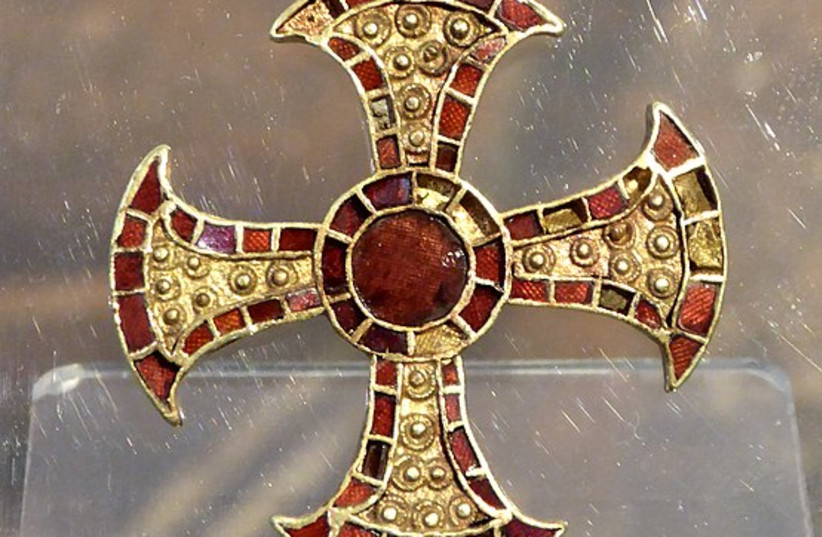The face of a 16-year-old girl from the 7th century was reconstructed by the Cambridge Archaeological Unit (CAU) in the United Kingdom, according to a release from the University of Cambridge. The reconstruction was made available for a public appearance on June 21.
The girl, who had died near Cambridge, had been discovered by the CAU in 2012. Despite having been found in England, the young lady is believed to have originated from Central Europe. She had been found wearing a gold Trumpington Cross.
The girl's bones and teeth underwent isotopic analysis by bioarchaeologists Dr Sam Leggett and Dr. Alice Rose, and archaeologist Dr Emma Brownlee. Their analysis confirmed that the woman likely originated from near the Alps.
The researchers found that once the girl moved to England, her protein consumption decreased.
“She was probably quite unwell and she traveled a long way to somewhere completely unfamiliar – even the food was different. It must have been scary,” Leggett empathized.

While it had been confirmed that the girl had suffered from some kind of illness, the cause of her death has yet to be confirmed.
Her burial style was also unique, as she was found lying on a carved wooden bed wearing fine clothing and golden jewelry. Based on the items that she was wearing, it is believed that the girl had been a member of the aristocracy and potentially royalty.
“She must have known that she was important and she had to carry that on her shoulders. Her isotopic results match those of two other women who were similarly buried on beds in this period in Cambridgeshire," Leggett said.
“So it seems that she was part of an elite group of women who probably traveled from mainland Europe, most likely Germany, in the 7th century, but they remain a bit of a mystery. Were they political brides or perhaps brides of Christ? The fact that her diet changed once she arrived in England suggests that her lifestyle may have changed quite significantly.”
How did researchers reconstruct her face?
Forensic artist Hew Morrison created the reconstruction after taking measurements of the girl's skull and conducting tissue depth data on a collection of other Caucasian women.
“It was interesting to see her face developing. Her left eye was slightly lower, about half a centimeter, than her right eye. This would have been quite noticeable in life," Morrison said.
Morrison was unable to conduct DNA analysis which means that the artist had to guess the girl's eye and hair color.
The importance of the find
The girl is one of only 18 burial beds to have been uncovered in the UK.
“These are intriguing findings, and it is wonderful to see this collaborative research adding to our knowledge of this period," said Dr. Sam Lucy, a specialist in Anglo-Saxon burial
“Combining the new isotopic results with Emma Brownlee’s research into European bed burials really does seem to suggest the movement of a small group of young elite women from a mountainous area in continental Europe to the Cambridge region in the third quarter of the seventh century.
“Southern Germany is a distinct possibility owing to the bed burial tradition known there. Given the increasingly certain association between bed burial, such cross-shaped jewelry, and early Anglo-Saxon Christianity, it is possible that their movement related to pan-European networks of elite women who were heavily involved in the early Church.”
